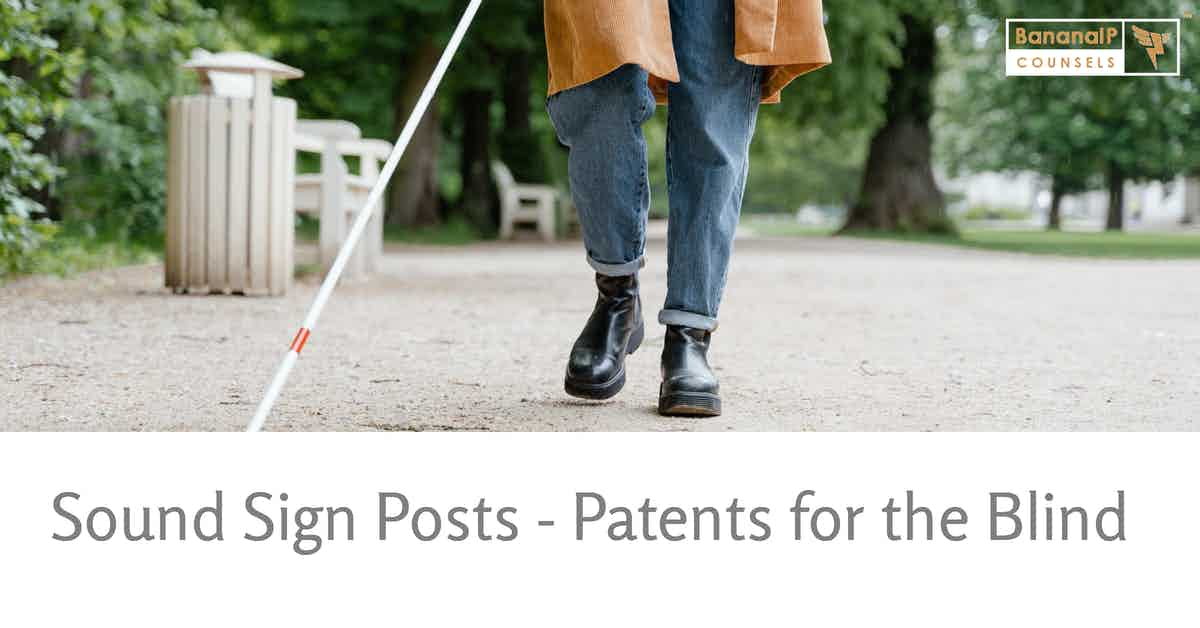This post was published on August 25, 2014.
Last week we discussed the talking walking stick innovation. Today, I am here with another patent, brought to my attention by the reliable, Naveen. Banking on certain patents to navigate your way through the world, is not an uncommon feature in knowledge driven industries and I embark on a mission to learn a few tricks. This patent, filed in 2008, by Universidade Do Porto, Portugal, seems to be an outcome of Academic Research.
The Guidance, navigation and information system especially adapted for blind or partially sighted people (US 20110172907 A1) patent aims to provide sound sign posts for the blind. The Abstract reads as follows:
“The present invention concerns an orientation, navigation and information system, especially adapted for blind or visually impaired people. It is essentially a system that allows blind or visually impaired people to access information usually made available only to public transportation users visually, through posters or informative signs, or through dynamic information screens of various nature. It allows, first of all, the access to information from the outside or within private or public facilities or locations, using a conventional mobile phone equipped with one or more additional communication channels, or a wireless communicator, and in second place, it allows also, simultaneously, the orientation and navigation of the system user(s), through places of interest according to their instructions, using a discreet and non-obstructive system of acoustic emitters and using also a cell system or radio communication network like Bluetooth and/or Wi-Fi and/or others, inserted in and related with the places of interest of the user. This allows the user to know his (her) accurate localization and can guide his (her) route. The present orientation, navigation and information system can also be used by people without visual impairment, by adapting the system, for example, to display orientation instructions visually.”
The first independent claim reads as follows:
“1. An orientation, navigation and information system intended for use by blind or visually impaired people characterized in that it enables the access to information which is usually made available to users visually from the outside of or within private or public facilities or locations using a mobile unit comprised of a conventional mobile phone and/or a wireless communicator and which includes a non-obstructive and discreet acoustic system and a cell system or local radio communication network of the Bluetooth and/or Wi-Fi type, these being implemented in and related to the places of interest in terms of useful information for the user .”
Simply put, the invention seeks to place acoustic signal emitting devices at different locations in a chosen environment and access those signals through a smart phone to help a blind person navigate the area. So, presuming this invention is implemented, all I need to do on my cell phone is download an app, which allows my phone to receive the sound signals from the emitters, and relay those signals to me by voice in the form of directions or data about the environment. I can use a Bluetooth device to hear these signals or listen to them on my phone’s speaker, which is a relatively better option in order to capture other essential sound signals, and of course, to avoid the threat of ear infections that are on a steady rise among earphone-addicted blind folk. My book – Roadhumps and Sidewalks – will give you a few other examples of the problems faced by blind folk.
Assuming that the Bangalore Urban Development Authority decides to implement this invention to enable the blind, the emitters can be placed on all road signs, on low lying branches, on signals posts, near potholes, gates, etc. In fact, if the government has the will, this can be made compulsory in all public places as well as corporations and residential complexes. In my apartment complex, which has twenty blocks, one can easily get lost, if focus is lost by virtue of thoughtful interference by the mind. But, wait a minute, I am talking about a Utopian world, which does not exist for the visually disabled, especially in India, where most bus drivers will not even stop at the right place, and where most buildings don’t have ramps.
Whilst I believe the invention will work well in closed environments, I see a serious problem in open environments, especially those open to natural and human intervention. I won’t be surprised if a monkey picks up one of these, and decides to be a guide to the blind! While it is tempting to try this invention out, I have not found signs of its implementation yet.
I will be glad to know if anyone of our Readers can point me in the direction of a source that sells and/or installs these devices. Experimentation, as they say, starts at home, and I will be happy to try one of these to avoid the ‘hit of the day’. Also, having caught onto the new world of Android Apps through Talkback, it would be interesting to open new paths into the world.



